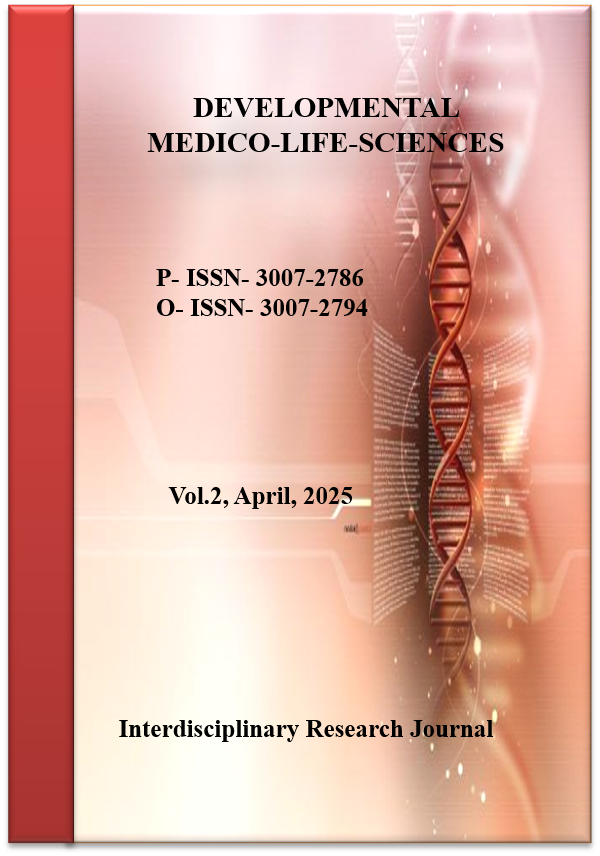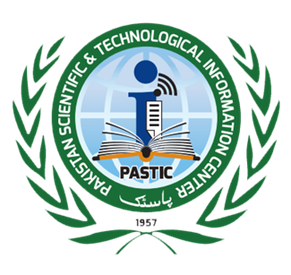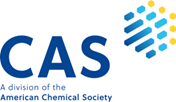Iron-Catalyzed Oxidative Stress and Atrial Conduction Delay in β-Thalassemia Carriers
Iron, Oxidative Stress, and Atrial Conduction in Thalassemia
DOI:
https://doi.org/10.69750/dmls.02.04.0119Keywords:
β-thalassaemia , iron overload, oxidative stress, atrial conduction delay, P-wave dispersion, atrial fibrillation, antioxidant therapyAbstract
Introduction
Traditionally, β-thalassaemia has been viewed as a ventricular disease, but a redox-based, quieter drama is played out within the atria decades before systolic dysfunction occurs. Judicious transfusion and potent oral chelators have extended life expectancy, and arrhythmias—especially atrial fibrillation—are now the major cardiovascular threat as neonatal screening is employed [1].
Trace amounts of labile, redox-active iron infiltrate into atrial myocytes, and there is increasing evidence of catalysing a relentless cascade of oxidative reactions that dismantle the molecular scaffolding of synchronous impulse propagation. This pathway cannot be understood without a comprehensive view of iron chemistry, redox biology at the cellular level, and electrophysiology of thin-walled, metabolically agile atrial tissue [2].
Labile Iron Pool and Iron Homeostasis:
Iron overload in β-thalassaemia is amplified by ineffective erythropoiesis and periodic surges of donor iron in chronic transfusion. If transferrin saturation is exceeded, ferrous ions accumulate as a micromolar ‘labile iron pool’ that passes through L-type calcium channels and divalent metal transporters into cardiac cells.
Instead, this freely cycling iron is not sequestered in a ferritin protective core where it could be sequestered, but rather it roams the cytosol and mitochondria, ready to shuttle electrons and initiate free radical generation. First responders to every post-transfusion oxidative surge, the atria have a high capillary density and brisk blood flow, and are perfused with plasma rich in non trans ferrin bound iron [3].
Reactive Oxygen-Species Chemistry in the Atrial Cytosol:
In the Fenton reaction, ferrous iron is the obligate catalyst and reduces the otherwise modest oxidant hydrogen peroxide to highly aggressive hydroxyl radicals. Also in the Haber–Weiss cycle, iron carries electrons between superoxide and peroxide to produce peroxyl and alkoxyl radicals in nanoseconds. Diffusion distances within the bounded space of a myocyte are so short that ROS can attack their molecular prey before they can be interrupted by antioxidant enzymes [4].
Sarcolemma and organelle membranes are lined with polyunsaturated phospholipids that lose hydrogen atoms, which begin self-propagating lipid peroxide chains whose end products stiffen membranes, rupture ion channel microdomains, and leak out into neighboring cells as secondary messengers of oxidative harm. This crisis is amplified by mitochondria, which are enriched in redox cofactors: superoxide flux is increased by complex I and III electron slippage, and subsequent peroxide generation and seeding of additional Fenton events form a vicious, self-reinforcing loop [5].
Molecular Targets of Oxidative Injury in Atrial Myocytes:
Ion channel proteins are embedded in highly peroxidation-sensitive lipid rafts. A change in the oxides of microenvironment shifts the voltage-dependence of sodium-channel activation, prolonging local depolarisation and slowing conduction at the very incipience of each P wave. Atrial syncytium becomes an electrical patchwork because gap-junction proteins connexin-40 and connexin-43 with high cysteine and methionine content are carbonylated, nitrated, and S-glutathionylated, accelerated by their ubiquitin-mediated degradation [6].
Oxidative post-translational modifications of SERCA2a delay calcium reuptake while nitrosylation of ryanodine receptors makes them leaky, raising diastolic cytosolic calcium, all at the same time. Baseline calcium also elevates, shortening the plateau phase of the atrial action potential and decreasing refractory windows, narrowing to form re-entrant wavelets. Redox-sensitized kinases like ASK1 and p38 MAPK activate transcription of pro-fibrotic genes via TGF β signalling, weaving collagen through once compliant atrial walls and imposing a structural substrate that traps conduction heterogeneity [7].
Electrophysiological Consequences:
These microscopic insults translate into macroscopic signatures on the surface electrocardiogram. Conduction velocity wanes, and the difference between the shortest and longest P-wave across twelve leads (P-wave dispersion) reflects the degree of regional conduction non-uniformity.
The inflection point for atrial fibrillation risk is sharp, occurring years before ventricular T2* changes or the onset of diastolic dysfunction are detectable by echocardiography, and dispersion values exceeding thirty-five milliseconds are highly indicative. Importantly, these indices are progressively widened in carriers once considered clinically insignificant, showing that oxidative damage is not the property of only heavily transfused patients [8].
Clinical Manifestations and Systemic Fallout:
The β-thalassaemia form of atrial fibrillation is seldom benign. Once paired with rapid ventricular response, high resting heart rates that occur in anaemic physiology truncate diastolic filling and convert compensated high-output states to frank heart failure. Splenectomy, platelet activation, and endothelial injury exaggerate thrombo-embolic risk, while hepatic iron burden complicates anticoagulant dosing.
Therefore, each onset of AF provides the basis for a spiralling interplay between haemodynamic instability, stroke propensity, and chelation-pharmacodynamic complexity that corrodes life quality and survival, even in the presence of preserved ventricular function [9].
Biomarker Landscape:
Real-time readouts of lipid peroxide injury are plasma malondialdehyde and 4-hydroxy-nonenal, and diminished ratios of reduced to oxidised glutathione signal antioxidant exhaustion. HDL-bound antioxidant capacity may be suppressed in iron overload, and its activity parallels that of paraoxonase-1. Additional granularity is obtained from high-sensitivity assays of protein carbonyls and advanced oxidation protein products. Together with digital ECG analytics, these biomarkers define a continuum from biochemical insult to electrical aberration, from which clinicians can discern atrial jeopardy before structural remodelling is cemented [10].
Therapeutic Strategies: Confronting Redox Pathology
The foundation remains chelation: Both deferiprone and combination deferiprone-deferoxamine regimens strip cytosolic and mitochondrial iron, diminishing the labile iron pool that fuels ROS. But chelation alone cannot bridge the gap between iron removal and redox quietude; antioxidant fortification does. Both high-dose vitamin E and N-acetyl cysteine terminate free radical chains and replenish thiol reserves, while taurine buffers mitochondrial membrane potential and stops electron leak [11].
Up-regulation of endogenous defences through Nrf2 activators—such as sulforaphane—induces long-lived expression of glutathione-synthetase, heme-oxygenase-1, and superoxide-dismutase-2. Superior blockade of superoxide at its enzymatic origin is achieved through pharmacological inhibition of NADPH-oxidase isoforms, and experimental ferroptosis inhibitors such as liproxstatin-1 prevent the lipid-peroxide avalanche from disrupting membrane fluidity and ion channel stability. Rate control with β-blockers decreases sympathetic drive and ROS formation electrophysiologically, whereas catheter ablation, although limited by a dense fibrosis, can be reserved for drug-refractory cases after control of oxidative load [12].
Surveillance Paradigm and Public-Health Implications:
Annual ECG P-wave analysis coupled with selective oxidative stress panels can be embedded into thalassaemia clinics to identify atrial risk early, without the cost of imaging all. The patients flagged by the dispersion or biomarker surges are then targeted for cardiac MRI for T2* quantification or speckle tracking echocardiography to delineate fibrosis. Decentralised ECG acquisition by primary nurses tethered to cloud-based cardiology review is an equitable means of early detection in low and middle-income nations where β thalassaemia is most prevalent. As a result, national thalassaemia programmes must expand their remit to include structured cardiology co-management and prevent arrhythmia as a key determinant of adult morbidity [13].
Future Research Directions:
Redox proteomic mapping of human atrial tissue acquired during corrective surgery or device implantation will identify residue specific oxidation events that cripple conduction proteins to identify druggable nodes.
High-throughput platforms to screen redox modulators for electrophysiological rescue are furnished by induced pluripotent stem cell–derived atrial myocytes bearing thalassaemic mutations. Temporal thresholds of intervention maximizing arrhythmia avoidance will be clarified with longitudinal registries that pair serial iron indices, oxidative biomarkers, and digital ECG from childhood to adulthood. Ultimately, integration of wearable technologies that can continuously monitor P wave may change episodic clinic visits to real-time risk dashboards [14].
CONCLUSION
Today, β-Thalassaemia carriers live in the doldrums of a redox storm catalysed by iron, beating cell by cell as the atrial heart gives way beat by beat before the ventricles fail. By shining a light on the oxidative stress, this silent catastrophe, clinicians can intercept it with a triad of intelligent chelation, antioxidant fortification, and vigilant electrical monitoring. And the imperative is clear: if we learned how to save thalassaemic children from anaemia in the last century, then we should learn the next to spare thalassaemic adults from the arrhythmogenic tyranny of iron.
Funding:
No funding was provided for this study.
Conflict of Interest:
The authors declare that there is no conflict of interest.
Downloads
References
Yadav PK, Singh AK. A review of iron overload in beta-thalassemia major and a discussion on alternative potent iron chelation targets. Plasmatology. 2022;16:26348535221103560. doi:10.1177/26348535221103560
Fibach E, Dana M. Oxidative stress in β-thalassemia. Mol Diagn Ther. 2019;23(2):245–61. doi:10.1007/s40291-018-0373-5
Russo V, Melillo E, Papa AA, Rago A, Chamberland C, Nigro G. Arrhythmias and sudden cardiac death in beta-thalassemia major patients: noninvasive diagnostic tools and early markers. Cardiol Res Pract. 2019;2019:9319832. doi:10.1155/2019/9319832
Sposi NM. Oxidative stress and iron overload in β-thalassemia: an overview. In: Zakaria M, Hassan T, editors. Beta Thalassemia. Rijeka: IntechOpen; 2019. doi:10.5772/intechopen.90492
Shen J, Fu H, Ding Y, Yuan Z, Xiang Z, Ding M, et al. Role of iron overload and ferroptosis in arrhythmia pathogenesis. IJC Heart Vasc. 2024;52:101414. doi:10.1016/j.ijcha.2024.101414
Pennell DJ, Udelson JE, Arai AE, Bozkurt B, Cohen AR, Galanello R, et al. Cardiovascular function and treatment in β-thalassemia major. Circulation. 2013;128(3):281–308. doi:10.1161/CIR.0b013e31829b2be6
Nomani H, Bayat G, Sahebkar A, Fazelifar AF, Vakilian F, Jomehzadeh V, et al. Atrial fibrillation in β-thalassemia patients with a focus on iron overload and oxidative stress: a review. J Cell Physiol. 2018;234. doi:10.1002/jcp.27968
Oudit GY, Trivieri MG, Khaper N, Liu PP, Backx PH. Role of L-type Ca²⁺ channels in iron transport and iron-overload cardiomyopathy. J Mol Med. 2006;84(5):349–64. doi:10.1007/s00109-005-0029-x
Srichairatanakool S. Antioxidants as complementary medication in thalassemia. In: Atroshi F, editor. Pharmacology and Nutritional Intervention in the Treatment of Disease. Rijeka: IntechOpen; 2014. doi:10.5772/57372
Meloni A, Pistoia L, Spasiano A, Cossu A, Casini T, Massa A, et al. Oxidative stress and antioxidant status in adult patients with transfusion-dependent thalassemia: correlation with demographic, laboratory and clinical biomarkers. Antioxidants. 2024;13(4). doi:10.3390/antiox13040446
Malagù M, Marchini F, Fiorio A, Sirugo P, Clò S, Mari E, et al. Atrial fibrillation in β-thalassemia: overview of mechanism, significance and clinical management. Biology. 2022;11(1). doi:10.3390/biology11010148
Jobanputra M, Paramore C, Laird SG, McGahan M, Telfer P. Co-morbidities and mortality associated with transfusion-dependent beta-thalassaemia in England: a 10-year retrospective cohort analysis. Br J Haematol. 2020;191(5):897–905. doi:10.1111/bjh.17091
Kattamis A, Forni GL, Aydinok Y, Viprakasit V. Changing patterns in the epidemiology of β-thalassemia. Eur J Haematol. 2020;105(6):692–703. doi:10.1111/ejh.13512
Isabelle T, Corinne P, Anderson L, Dominique S, Robert G, Dora B, et al. Complications and treatment of patients with β-thalassemia in France: results of the National Registry. Haematologica. 2010;95(5):724–29. doi:10.3324/haematol.2009.018051






















